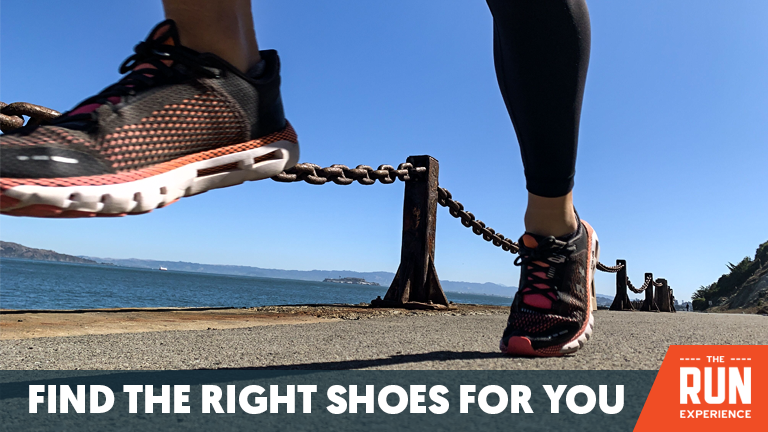How to Jog Properly to Lose Weight (The Right Way)
Learn how to jog properly to lose weight so that you hit your goals & don't develop injuries that derail your running & weight loss progress.

It’s a new year and a new decade, and many beginner runners are looking for a way to lose weight by learning how to jog properly. We’re here to help you get started, find the right running technique, and get on your way to your health and fitness goals.
Whether you want to learn how to jog properly jog for a race or jog for weight loss, we’re here to help. Fortunately, with running, you can usually do both at the same time. However, there’s a right and a wrong way to go about it.
Approaching jogging to lose weight with the wrong perspective can turn into a fad diet. You might lose some weight, but you’ll likely put it back on later. That’s because fad diets typically aren’t sustainable.
We don’t want running to be the same thing for you. We want it to be a sustainable activity that you enjoy that also leads to weight loss and a healthy lifestyle.
Here’s how to jog properly to lose weight with a long-term perspective in mind.
Does Jogging Help You Lose Weight?
Jogging is a popular and effective way to lose weight, known for its ability to burn calories, improve cardiovascular health, and boost metabolism. But how exactly does it contribute to weight loss, and what are the factors that can maximize its effectiveness?
Let's take a closer look:
1. Calorie Burn
At the heart of weight loss is the simple principle of calories in versus calories out. Jogging is an efficient calorie-burner, helping you create a calorie deficit where you expend more calories than you consume.
On average, a person can burn approximately 100 calories per mile jogged, depending on weight, pace, and individual metabolism. This makes jogging a straightforward and accessible way to increase your daily calorie expenditure.
2. Increased Metabolic Rate
Beyond the immediate calorie burn, jogging can increase your resting metabolic rate (RMR), meaning you continue to burn calories at a higher rate even when you're not exercising. This is due to the afterburn effect, or excess post-exercise oxygen consumption (EPOC), where your body uses more energy to recover from the exercise stress.
3. Appetite Regulation
Jogging can also influence your appetite hormones, leading to improved satiety and a reduced tendency to overeat. Regular exercise has been shown to balance levels of ghrelin, the hunger hormone, and leptin, the hormone responsible for signaling fullness. This can help you make better food choices and stick to your nutritional goals for weight loss.
4. Fat Loss vs. Muscle Preservation
One of the advantages of jogging for weight loss is its ability to target fat loss while preserving lean muscle mass. When paired with a balanced diet rich in protein, jogging helps ensure that the weight you lose is predominantly fat, keeping your muscles intact. This is crucial for maintaining a healthy metabolism and achieving a toned physique.
5. Consistency and Progression
Regular jogging sessions contribute to a cumulative calorie deficit over time, leading to sustainable weight loss. It's also important to gradually increase the duration and intensity of your jogs to continue challenging your body and preventing weight loss plateaus.
How to Jog Properly to Lose Weight
There’s a lot to consider when you’re learning how to jog properly–whether you’re doing it on the roads, a track, or a treadmill. But let’s start with the basic running tips for weight loss: running gear.
1. Find the Right Running Gear
The number one thing you’re probably thinking about is finding the right running shoes. Visit a local running store to have an expert help fit you into shoes that are comfortable and promote a good running form.
Most running stores will even have someone who watches you run in a few pairs of shoes to assess your running form and see how your foot strikes the ground to find the right match. Don’t be afraid to ask questions!

Now for the rest of the gear. Wear a watch to check out your pace, just simply jog for a specified period of time. Pick comfortable clothes, a t-shirt, shorts or leggings (a supportive sports bra) for the ladies, lightweight, and moisture-wicking socks are fine if you’re running indoors or in mild weather outdoors.
If it’s running outside in the cold or in extreme heat, be more selective. When it’s cold, wear layers that you can take off as your body warms up. If it’s blazing hot, select moisture-wicking clothes and a hat to keep you out of the sun. Always opt for sunscreen in any weather.
2. Focus on Proper Nutrition

When you’re learning to jog properly to lose weight, your diet is just as important as your workouts. I’ve said it before and I’ll say it again–running is no license to eat whatever you want. In fact, if you consume more calories eating than you expend jogging, you’ll likely end up gaining weight.
Consider keeping a food journal if weight loss is your goal. There a ton of apps for your mobile phone that makes it easy to track your calorie count and nutrition data. Just subtract that by the number of calories you burn running, which you can do with a Fitbit, apple watch, or similar device. Or simply, use an online tool to estimate the number of calories you burn jogging.
Finally, let’s talk about what you should be eating. Keep it simple. Avoid processed foods and foods with added sugar. Focus on fresh vegetables, lean protein, fruits, and whole grains. That being said, it’s okay to indulge once in a while–everything in moderation. If you have a favorite treat like cake or ice cream, don’t feel like you can NEVER have it. Just limit it to once a week or so and control your portion size.
3. Start Slow to Prevent Injury
When we have a goal like losing weight, it’s easy to run out the gates quick in hopes of fast results. But in this case, slow and steady wins the race. Learning how to jog properly to lose weight is part of a lifestyle change that doesn’t happen overnight. Going too hard too fast can encourage burn out and increase your risk of injury.
Start with a proper warm-up to get your muscles limber and your heart rate up. Begin with a jog/walk strategy. Jog for a minute, then walk for a minute. As you get more comfortable, start increasing your jog time and decreasing your walk time. It will come naturally over time as long as you’re consistent.
As you get accustomed to jogging, you can set goals to jog for a certain number of minutes before walking. If you’re outside, I’ve always found it helpful to focus on certain landmarks like counting mailboxes and making it to a certain destination before slowing down. Don’t forget to finish up with a good cool down, too!
4. Practice Good Form
One of the best ways to prevent running injuries is to adopt a proper form. You want to keep your head up with your body leaned just slightly forward. Keep your arms bent at a 90-degree angle.
If you want more resources on proper running form, you can work with a running coach, join one of our running programs, and check out our videos on good running form, such as this one from Coach Holly:
5. Incorporate Strength Training
Running isn’t all about just hitting the road or treadmill. It’s also a great idea to incorporate some light strength training into your exercise routine to encourage stronger muscles that help prevent injury and soreness and make you an overall better athlete.
Plus, building muscle mass with strength training helps promote weight loss. Stronger muscles burn more calories than weaker muscles! Focus on bodyweight exercises you can do without equipment or even a gym, like planks, push ups, squats, and lunges. Learn more about strength training from runners in this video:
Is Jogging Good for Weight Loss?
Many people ask the question: “Is jogging good for weight loss?”
The answer is…well, it depends.
If you love running, then jogging can be a great tool to lose weight. However, you need to choose an activity you can stick with.
Jogging isn’t for everyone—and that’s OK. You might like biking, swimming, hiking, or even team sports more, and they’re all good for weight loss.
Jogging can be great for weight loss because you can burn so many calories within an hour. But, jogging also takes a toll on the body. Go too hard or too fast, and you might develop and injury that makes it hard to lose weight.
Take things slow and ease into it. Yes, you can use jogging to lose weight, but you need to go about it methodically with the tips we outlined above.
What’s the Best Way to Run for Weight Loss?
The best way to run for weight loss is to focus on sustainability. Forget about the whole HIIT vs. low-intensity debate. If you can’t maintain it, it won’t matter.
The best running to lose weight is the running you can maintain. If you can run 5-6 times per week at an extremely slow pace, that’s better than burning out quickly by adding in frequent sprints or interval training.
As we mentioned before, the priority needs to be avoiding injury. Any injury will set you back, and without exercise, you’ll likely regain the weight you’ve lost. Do everything in moderation and take your running weight loss slow.
It’s not a race. It’s a journey.
How Long of Jogging Do You Need to Lose Weight?
It depends. The longer you jog, the more weight you’ll lose. However, you have to balance this with your body’s capacity and aerobic conditioning.
Don’t start jogging 20 miles per week tomorrow just because you want to lose weight. Slowly transition into it.
Try to only add 10% mileage, elevation, or intensity each week. That means if you do 20 miles this week, do around 22-23 next week. Progressing slowly and intentionally will help you adapt, build strength, and avoid injury—and all those things will help you continue jogging and losing weight in the long run.
Learn How to Properly Jog With a Program
Runners don’t just run. They’re athletes. If you want to learn how to properly jog, lose more weight, increase your speed, and nail your goals, you need a holistic training program.
Fortunately, we have just the thing inside our mobile app.
Have you downloaded our new mobile app? It’s loaded with workouts, videos, running tips, and advice from expert coaches to keep you motivated every step of the way. Don’t forget to check out our range of training plans for runners of all levels, too!
